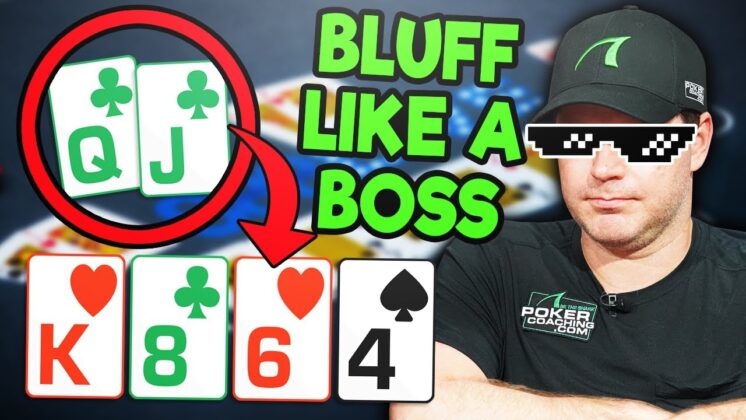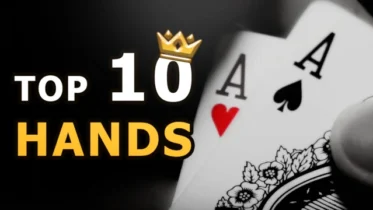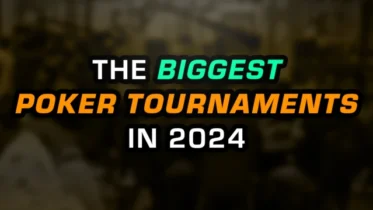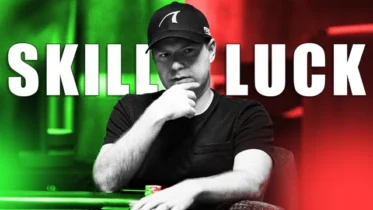Last month, I made my way to Las Vegas and played in the U.S. Poker Open, a series of high stakes tournaments featuring the best in the game. Televised on PokerGo, viewers saw me make a deep run arriving at the final table as the chip leader. With double his stack, I stood my ground facing a preflop raise from WSOP bracelet winner and crusher Jeremy Ausmus. Ready to square up with one of poker’s best, I used my suited connectors to take on my fellow pro.
The Game: $10,000 Buy-In
Blinds: 30,000/60,000 with 60,000 Big Blind Ante
Stack Sizes: 32 Big Blinds Effective
This video comes from Jonathan Little’s YouTube Channel. If you would like to stay up to date with more video content such as this, including hand breakdowns from Hellmuth vs Dwan, Daniel Negreanu, Bryn Kenney and more, click here.
Options On The Button
In the hijack, Ausmus would make it 130,000 to play after looking down at 10♠-10♦. At this point in the tournament, Ausmus was only slightly ahead of the remaining six players (excluding myself). Ausmus was technically sound in raising, but wanted to maintain some caution considering the apparent ICM implications of busting.
Following a fold from the cutoff I looked down at Q♣-J♣. With position, I had a number of options at my disposal to proceed in the hand, the best being to call or rip it all-in applying big stack pressure. By forcing Ausmus all-in, I would force him to fold tightly while still having some equity when he does elect to call. While moving all-in would have been an effective play, calling accounted for Ausmus’ strong range and allowed me to play the flop.
No Fear On The Flop
The Pot: 410,000
The Board: K♥-8♣-6♥
Effective Stack: 29 Big Blinds Effective
Out of position, Ausmus showed no fear of my stack leading out for 165,000. With the king-high board, it was likely in Ausmus’ best interest to check rather than bet. Considering my preflop calling range, I had many suited connectors containing kings he could have been betting into. Even without a king, the draw equity of my hand allows me to call such small bets. By betting, the best result for Ausmus was to induce a fold, even though I did not check-raise my call still showed plenty of strength for him to worry about.
If I had held a worse hand that lacked the runner-runner equity of Q♣-J♣, a check-raise would have been a decent play especially if it induced a fold. With the substantial stack advantage I had, calling was the ideal option that allowed me to apply pressure on future streets. When you are the big stack, you have the ability to splash around and stay in pots, don’t be afraid to mix it up when you are the top dog.
Carefully Applied Pressure
The Pot: 410,000
The Board: K♥-8♣-6♥-4♠
Effective Stack: 26 Big Blinds Effective
Not improving on the turn Ausmus would check, and in that moment I knew I had to bet. Deciding on my bet size, it was ideal to use a smaller size that would allow me to move all-in on the river if I felt inclined. While Q♣-J♣ was not the best bluffing hand as it blocked cards I would have liked Ausmus to have, it still provided over cards I could hit on the river to beat his tens.
Wanting to keep the heat on my opponent, I bet 350,000. If Ausmus were to call, the pot would have grown to a proper size to set up a river shove. Considering the substantial ICM implications Ausmus was facing, I would be shoving a large percentage of the time to induce a fold, but did my bet scare him off the better hand?
Result: I Take Down Another Pot On My Way To $149,000
Successfully applying enough pressure, I forced Jeremy Ausmus to fold the better hand. Utilizing my momentum, I would take my mammoth stack all the way to second place taking home over $149,000. A special thank you to my opponent Jeremy Ausmus for a well played game, and an additional thank you to PokerGo for hosting the amazing event. For more videos on my deep run at the U.S. Poker Open, be sure to check out our YouTube channel.



